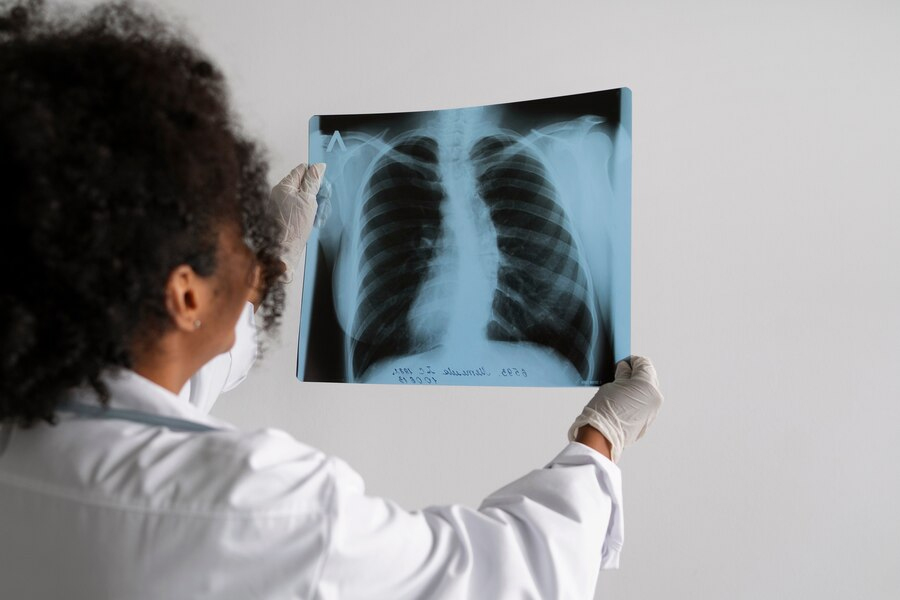
Two women, both 33 years old, were diagnosed with a lung disease following eyebrow microblading, a semi-permanent cosmetic procedure for filling in eyebrows. They sought medical attention after noticing unusual 'orange-red plaques' on their eyebrows. One had the procedure a year earlier, while the other had it done six years prior. Skin biopsies indicated sarcoidosis, and chest X-rays and scans revealed the disease in their lungs and lymph nodes.
Table of Content:-
We spoke to our expert Dr Praveen Kumar BS, Consultant- Pulmonologist, Manipal Hospital, Yeshwanthpur, Bengaluru, who explained sarcoidosis, its causes, symptoms, diagnosis, and treatment.
What Is Sarcoidosis?

“Sarcoidosis presents as an inflammatory disorder characterised by the formation of granulomas—red, swollen tissue patches composed of clumped inflammation cells—throughout the body. Despite ongoing research, the precise cause of these granulomas remains elusive”, said Dr Kumar.
He added, “While sarcoidosis can impact various organs, the lungs tend to be the primary site of involvement, although it can also affect the skin, eyes, heart, muscles, joints, bones, liver, kidneys, and brain, among others. Pulmonologists often lead in diagnosing and managing this complex condition.”
For some individuals, sarcoidosis may resolve spontaneously without necessitating treatment. However, treatments are available to alleviate symptoms and slow disease progression, although a definitive cure is currently lacking.
Sarcoidosis is considered rare, and its prevalence varies globally due to challenges in diagnosis and potential misidentification with other conditions. Consequently, the true number of cases remains uncertain across different regions.
According to the Journal of Oral and Maxillofacial Pathology, sarcoidosis is a condition involving granulomas that can affect multiple organs, with the lungs and lymphatic system commonly affected. Many patients show no symptoms, leading to the disease going unnoticed for long periods. Diagnosis often occurs when symptoms emerge or organ dysfunction becomes apparent after several years.
Also Read: All About Microblading: A Popular Cosmetic Treatment To Beautify and Define Your Eyebrows
What Causes Sarcoidosis?
The precise cause of sarcoidosis remains unknown, although ongoing research is being carried out. According to JOMFP, The causes can be classified into genetic factors, environmental factors, infection, and autoimmunity.
What We Know About Sarcoidosis?
- Sarcoidosis is not infectious (not transmissible)
- Sarcoidosis is not a form of cancer
- Sarcoidosis does run in families, but there is only a 5-10% chance someone else in your family will have the disease
"The majority of individuals with sarcoidosis experience spontaneous improvement within 12-18 months without targeted treatment, allowing them to resume regular activities. This is attributed to the body's natural ability to heal the condition", said Dr Kumar. However, in some cases, the immune system fails to resolve the granulomas, leading to the formation of scar tissue (fibrosis). This may necessitate long-term treatment and monitoring to manage damage to the affected body part.

What Are The Symptoms Of Sarcoidosis
Diagnosing sarcoidosis can be challenging due to its diverse symptoms, and there is no single definitive test for this condition. Dr Kumar listed the most common symptoms as follows:
- Dry cough
- Shortness of breath
- Chest pain
- Fatigue
- Flu-like symptoms: fever, fatigue, and joint pain
- A painful red rash, usually on the arms or legs
- Eye irritation and sight problems
- Swollen glands, palpable in the neck or facial areas
- Difficulties with concentration and memory
How Is Sarcoidosis Diagnosed?
“Doctors may take an extended period to diagnose sarcoidosis as they need to exclude other conditions resembling it, and symptoms vary among individuals. This process can be protracted and exasperating for those seeking clarity about their health. Occasionally, sarcoidosis is incidentally detected, such as during routine chest X-rays for unrelated issues”, highlighted Dr Kumar.
Diagnostic Tests For Sarcoidosis

- A chest X-ray to assess whether the lungs and lymph glands (part of the immune system) are affected
- Blood tests are conducted to evaluate liver and kidney function, calcium levels, and other immune system markers. This may include measuring the Angiotensin Converting Enzyme (ACE) level, which is often elevated in individuals with sarcoidosis.
Additional tests to determine disease severity and affected areas of the body, such as:
- Heart tracing (ECG)
- Lung function tests (spirometry, single breath gas transfer). Check the ELF spirometry factsheet
- Eye examination
“However, the absence of abnormal ACE levels or abnormalities in chest X-rays does not exclude the possibility of sarcoidosis, just as elevated ACE levels alone do not confirm the diagnosis. Doctors may opt for further investigations based on individual symptoms, which may encompass laboratory analyses, urine examinations, echocardiograms, brain MRIs, or chest CT scans”, added Dr Kumar.
In many cases, doctors need tissue samples or biopsies to confirm the diagnosis. These samples are typically obtained from lung glands, lung tissue, neck or chest glands, or skin. If a biopsy is deemed necessary, it is usually conducted under local anaesthesia.
How Is Sarcoidosis Treated?
“Your doctor will consult with you regarding the necessity of treatment and the available options. Many people may not require treatment and can instead undergo regular monitoring. Various medications are available to treat sarcoidosis, typically aimed at alleviating symptoms. In some cases, medications may target specific affected areas of the body, such as eye drops or skin creams”, highlighted Dr Kumar.
Other medications address the entire body from within and can be especially beneficial for treating granulomas in the lungs, brain, and heart. These medications include
- Prednisolone and prednisone (steroids) – are the most common medicines used for sarcoidosis
- In some cases, methotrexate and azathioprine are used as steroid-sparing alternatives to prednisolone
- Infliximab and similar drugs can be effective when other medications, such as prednisone, are not
Dr Kumar said, “Steroids are highly effective in managing sarcoidosis symptoms, although they do not provide a cure. The condition may get worse again after the steroid treatment is discontinued. However, steroids can also cause side effects, such as weight gain, diabetes, thinning of the bones (osteoporosis) and skin, and mood swings.” Similarly, other medications may carry their side effects. It's advisable to have a discussion with your doctor about the potential risks and benefits associated with any prescribed treatment.
If you begin steroid treatment, your doctor will help you find the lowest dose that can control your symptoms by gradually lowering the dose over time. If it cannot be lowered, a second drug, such as methotrexate or azathioprine may be added.
The frequency of monitoring your condition will depend on how sarcoidosis impacts you. Most patients are checked every three months or so for the first two years.
In addition to medication, other supportive measures may be provided, such as exercise, pulmonary rehabilitation, and psychological support. You should discuss these options with your doctor to determine the best approach for your needs.
How Does Sarcoidosis Progress?
“Many people diagnosed with sarcoidosis improve without specific treatment and go on to live normal lives. However, around 1 in 4 patients will experience persistent chronic symptoms that require ongoing management”, added Dr Kumar.
[Disclaimer: This article contains information provided by an expert and is for informational purposes only. Hence, we advise you to consult your expert if you notice any health complications to get the necessary treatment.]
Also watch this video
How we keep this article up to date:
We work with experts and keep a close eye on the latest in health and wellness. Whenever there is a new research or helpful information, we update our articles with accurate and useful advice.
Current Version
